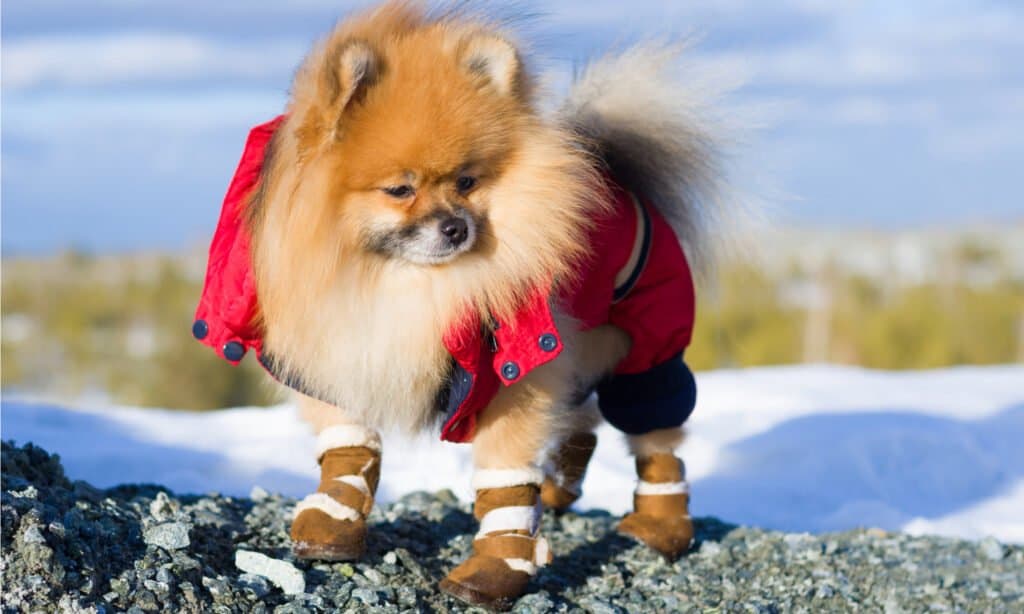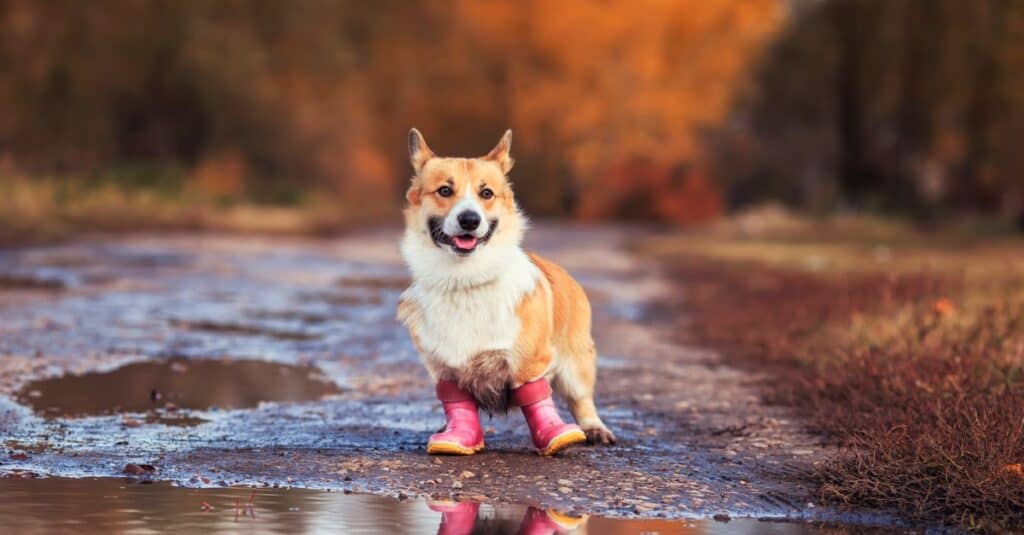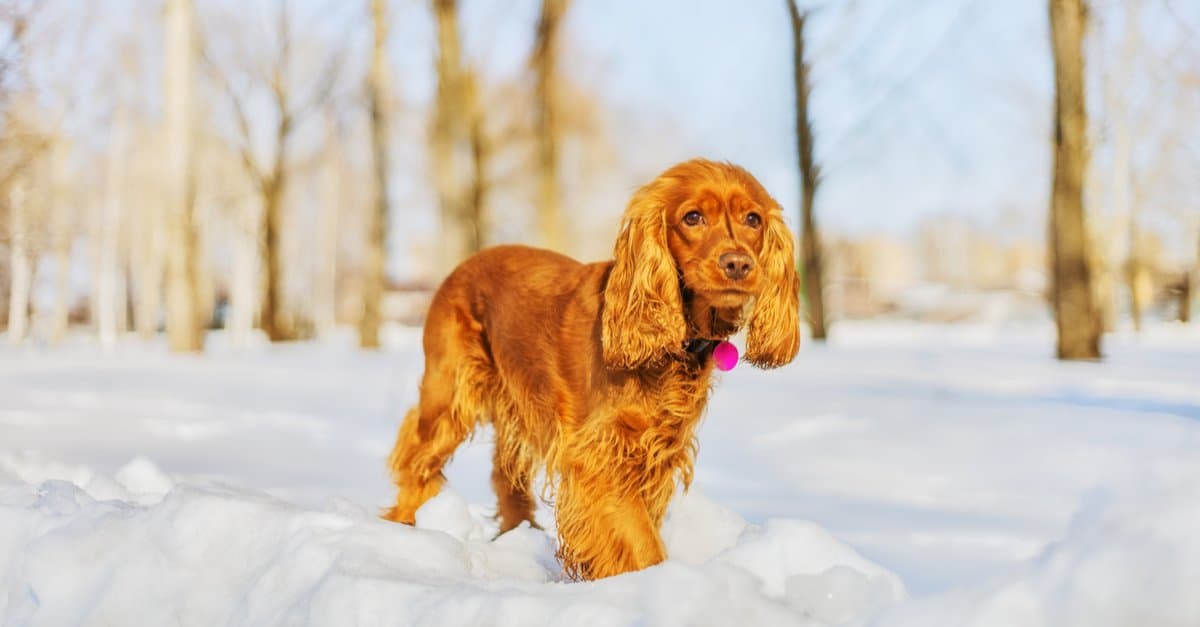If you’ve ever seen a dog try booties on for the first time, you know how comical it can be. Watching the pup try to figure out what the heck is on their feet may be funny, but do dogs need boots? Here’s what you need to know about cold weather conditions and dog booties.
Why Should a Dog Wear Boots?

Boots protect your dog’s delicate paw pads in harsh weather.
©Photology1971/Shutterstock.com
There are a few good reasons to consider putting booties on your dog. In extreme temperatures that are either very hot or very cold, boots can protect their paws. Cold, snowy conditions can potentially cause painful cracks, splits, or abrasions on your dog’s paw pads. Additionally, wearing booties might help give your pup more traction when navigating icy patches or even slick sidewalks from rain.
At What Temperature Should a Dog Wear Boots?
According to the American Veterinary Medical Association, it depends on your dog’s temperature tolerance. The breed, amount of body fat, and general health all affect how they handle freezing temperatures. Generally, you may consider putting boots on your dog to protect their feet when temperatures hit below freezing levels at 32 degrees Fahrenheit. But it also depends on whether where you walk is icy or slippery or if your dog seems uncomfortable.
How Do You Know If Your Dog Needs Boots?

Small breeds might be more sensitive to cold ground temperatures than larger, heartier breeds.
©LiniaS/Shutterstock.com
There are some signals your dog is likely to give you that demonstrate they need a little extra protection on their feet. These include:
Picking up paws outside. If your dog gingerly lifts their feet while walking, the sidewalk is probably too cold or uncomfortable for their paw pads.
Licking their feet. Licking, cleaning, or gnawing at the pads is a sign to consider booties.
Shivering. If your dog shakes in the temperatures, both booties and a coat of some kind are useful protection.
Chemical ice melters. Many of the de-icers used on public streets, or sidewalks aren’t great for dogs for a few reasons. The sharp crystals can cut or irritate paw pads. There also may be toxic ingredients in some of the types used that are extremely dangerous for a dog to ingest. For example, if someone uses antifreeze to melt ice, it can be deadly for a dog who ingests it. You don’t want them licking their paws after they walk on these types of de-icers.
You may also want to put boots on your dog for the simple reason of keeping their paws clean if you are heading out in muddy, snowy conditions and it would be a hassle to clean off their feet afterward.
How To Get Your Dog Used to Boots

Take it slow when introducing your dog to their new shoes.
©iStock.com/Nataba
Shoving shoes on your dog and laughing at them as they flail around isn’t going to work very well for making your pup comfortable. It’s best to make it a slow process with lots of positive reinforcement. Encourage your dog to inspect and sniff the boots first. Then proceed by putting only one boot on at a time, adding one more boot every day. Go even more slowly if your dog is acting stressed. Give lots of treats and praise. Let them get used to the feeling by wearing the boots in the house first before venturing out.
Dog boots are a useful tool for protecting your dog’s delicate paws in harsh weather conditions. Just know when it’s worth using them, and make sure your pup is okay with wearing them first. And let’s face it, they make your dog look pretty darn cute, too!
Ready to discover the top 10 cutest dog breeds in the entire world?
How about the fastest dogs, the largest dogs and those that are -- quite frankly -- just the kindest dogs on the planet? Each day, AZ Animals sends out lists just like this to our thousands of email subscribers. And the best part? It's FREE. Join today by entering your email below.
Thank you for reading! Have some feedback for us? Contact the AZ Animals editorial team.








